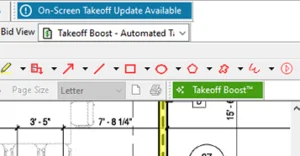Many of us in the preconstruction industry are adjusting to working from home due to social distancing mandated by the need to control the spread of the coronavirus. By this time, you’ve probably secured the basic technology, such as laptops, HDMI cables, additional monitors, extra keyboards and a mouse, and so on. But that’s just the beginning of the story.
As someone who spends her days training estimators and project managers, I know that working remotely can bring a whole new set of challenges. Whether you are brand new to working from home or if you’ve done it before (albeit sparingly), let me offer a few tips and tricks that will make the adjustment a little more manageable.
Have a Designated Workspace
First, carving out a place that will serve as your remote office is key. Some of you may have a small office area or at least a desk that you can retrofit for the time being. Others may have to use the kitchen table or grab a folding card table from the basement. You’ll also need to find a suitable chair so you’re not hunched over or in an uncomfortable position all day.
Having a designated workspace allows you to leave your office setup in place from day to day. (If you’re working from the kitchen table, perhaps you can eat in another spot for a while.) Having this area will help you to “unplug” and separate your work life from your home life. This can be challenging—especially if other members of your family, such as your children, are also home right now.
Accept Some Inevitable Distractions
Along those same lines, it’s helpful to realize that we all need to make allowances for certain things during this time. For example, kids, spouses, or even pets may be heard (or seen) in the background on conference calls with other estimators or project managers. Doorbells may ring when you’re in the middle of conducting online training or on the phone with your material supplier. Lawn mowers, leaf blowers, loud motorcycles, or other outdoor sounds will inevitably make concentrating more difficult from time to time.
Without a doubt, these things can affect our productivity, but they also remind us that we’re doing the best we can during these challenging days. Your colleagues will understand because they’re likely in the same situation—or could be very soon. We should see those moments as good opportunities to smile and invite a few moments of levity and understanding.
Keep to a Schedule
Try to maintain a set work schedule. If possible, begin and end your workday at the same time you normally would. Doing so can help keep your productivity as consistent as possible. It can also make it easier for your colleagues to get in touch with you to review the details of a project, especially if the pandemic is prompting changes on the fly and decisions need to be made quickly.
However, with so many of us having other family members at home with us, maintaining your typical work schedule may be more challenging. In that case, it’s best to discuss the situation with your manager to see what accommodations can be made to adjust your workday.
Remember to Take Breaks
On a normal day at the office (or the job site), you’d likely take a couple breaks and grab some lunch. You should also be sure to do the same while working from home. No matter your trade or role, this can help you maintain a consistent structure to your workday.
During those breaks, make sure you get up from your desk as much as possible—just like you do at the office or on the jobsite. Consider walking around your house for a few minutes—or even going out into your yard (if that’s an option). Fitting in a few minutes of light exercise can also help to refresh your mind and may even spark new ideas and strategies for a problem or situation you’ve been struggling with for a long time.
Reach Out—But Don’t Touch Someone
Finally, communication is more important than ever as we adjust to not seeing colleagues in person. As a result, consider choosing to call co-workers to discuss the details of an upcoming project, rather than email or text. Talking by phone can help you to reconnect with your peers and see how they are handling the current situation.
In addition, because everyone’s minds are occupied with so many different things right now, verbal communication can often be the best way to avoid any misinterpretations about meaning or intent.
Likewise, when attending virtual meetings from home, think about switching on your webcam, even if you typically don’t do so while at the office. Seeing your colleagues’ faces will foster a renewed sense of community and teamwork that can be more challenging to develop while working from home. It can also be a morale booster for your team to see one another and know you’re all getting through this situation together—one day at a time.



